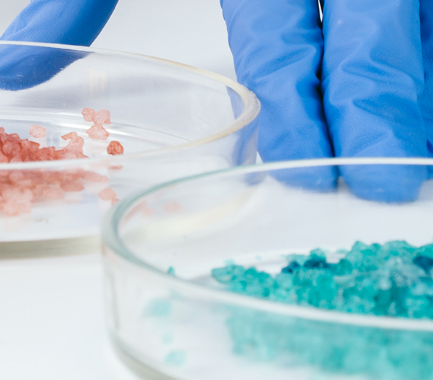Your contact
PENPET-Team - Hamburg

Tim Meister
Sales
Tel. +49 (0) 40 - 675 7 99 40
sales@penpet.de
Get in touch with us.
Butyl Acrylate
Butyl Acrylate is an ester of acrylic acid and is used industrially in large quantities. The colorless liquid belongs to the “High Production Volume Chemicals” and is obtained from n-butanol and acrylic acid in an acid-catalyzed esterification process. Alternatively, the compound can be prepared by reacting carbon monoxide with acetylene in the presence of n-butanol.
Butyl Acrylate serves as a plasticizing component of acrylic resins and can be used as a reactive diluent in the radiation curing of reactive materials. The compound is polymerized into poly Butyl Acrylate, which is used in the manufacture of coatings, paints, adhesives, textiles, plastics, fuels and sealants.
At PENPET you can reliably order the amount of Butyl Acrylate you need. We look forward to receiving your inquiry for an individual offer. Delivered as a liquid in tank containers or packed in IBCs and drums.
CAS no. 141-32-2
EINECS no. 205-480-7
Molecular formula: C7H12O2
Synonyms: butyl 2-propenoate, n-Butyl Acrylate, Butyl Acrylate, butyl propenoate
Areas of application: Manufacture of acrylic resins, coatings, adhesives, paints, textiles, plastics and fuels.
More Information
As an ester, Butyl Acrylate consists of two components, as illustrated by the synonymous name Butyl Acrylate. The starting materials n-butanol and acrylic acid react with each other by splitting off a water molecule and are connected via a so-called ester group. This functional group is thus located in the middle of each Butyl Acrylate molecule. Under certain circumstances, this can be dissolved by adding water and the compound can be converted back into its original components. At the same time, the ester group serves as a starting point for further reactions of Butyl Acrylate and enables, among other things, polymerisation to form more complex structures.
The clear, colorless liquid has a pungent, slightly fruity odor. Butyl Acrylate does not dissolve well in water. Due to its lower density, it floats on contact with water. The compound is readily soluble in ethanol, diethyl ether and acetone.
Butyl Acrylate is a highly reactive substance. It tends to spontaneously polymerize when heated, under the influence of light and in contact with oxidizing agents and peroxides. A stabilizer such as hydroquinone is therefore usually added to the compound. However, heating the substance can significantly reduce the effect of the stabilizer and trigger violent, exothermic polymerisation.
Butyl Acrylate liquid and vapor are flammable. The fumes are heavier than air and spread unnoticed along the ground. They can form easily flammable and explosive mixtures with the ambient air. Butyl Acrylate must be kept away from all types of ignition sources as well as hot surfaces and heat. There is also a risk of explosion if Butyl Acrylate reacts with strong oxidizing agents, acids, bases, amines, halogens, hydrides and polymerization initiators. Exposure to light can lead to chemical changes in the substance.
Butyl Acrylate causes skin irritation and serious eye irritation. Affected parts of the body should be rinsed thoroughly and examined by a doctor. Contact with the compound can also trigger an allergic skin reaction. Butyl Acrylate is respiratory irritant. Inhaling the substance can cause coughing and shortness of breath.
Butyl Acrylate is harmful to aquatic life and can cause long term damage. Avoid release into the environment. In addition, Butyl Acrylate must not get into the sewage system due to the possible risk of explosion
